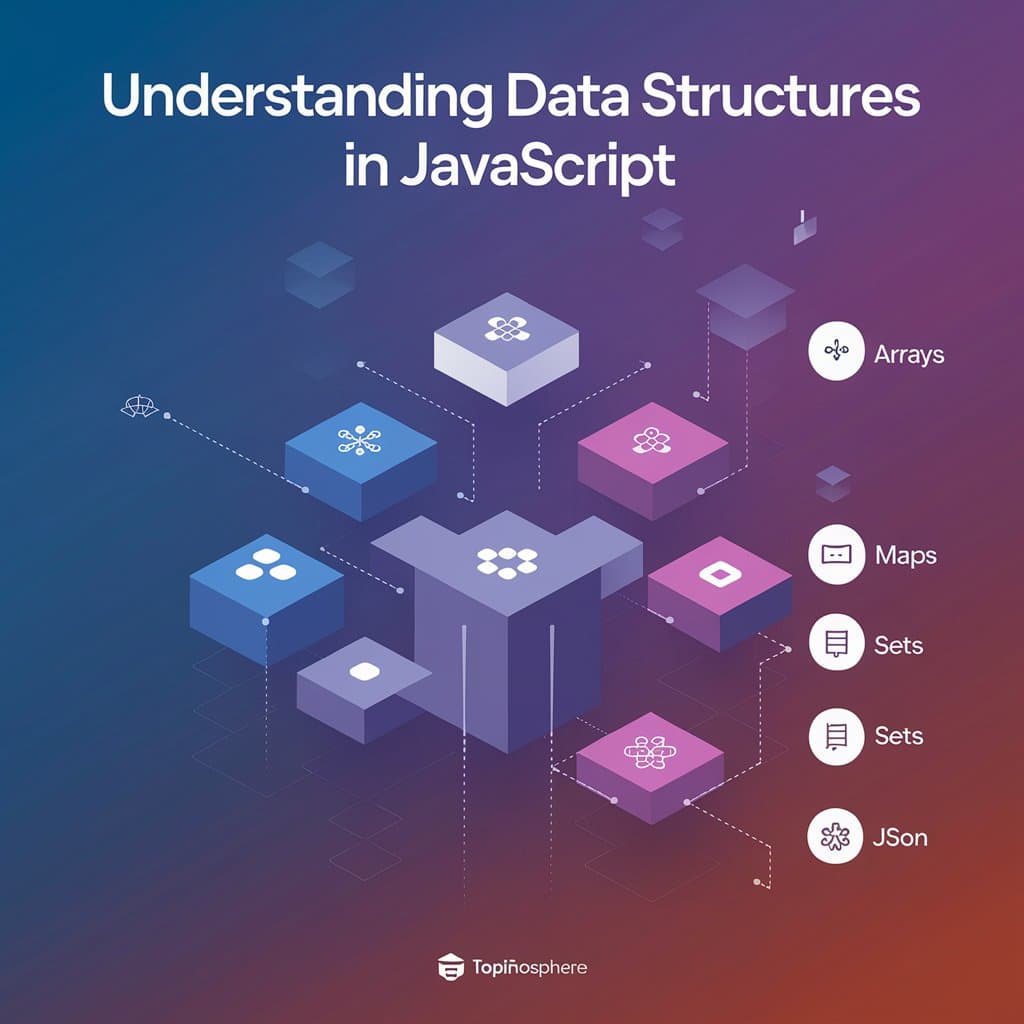
Understanding Data Structures in JavaScript
Explore JavaScript data structures, including arrays, maps, sets, and JSON. Learn how to use different collections to store and manage data effectively.

Data structures are crucial for efficiently managing and organizing data in programming. JavaScript provides a variety of built-in data structures that allow developers to store and access data in different ways. These structures fall into three primary categories: indexed collections, keyed collections, and structured data.
In this article, we will explore the various data structures available in JavaScript, including arrays, maps, sets, and JSON.
1. Indexed Collections
Indexed collections store values that are accessible through an index. JavaScript offers two main types of indexed collections: typed arrays and regular arrays.
1.1 Typed Arrays
Typed arrays in JavaScript are used to handle binary data in a more efficient way. They allow you to work with raw binary data, such as image files or video streams, by creating arrays that store data in specific formats like 8-bit integers, 32-bit floats, and more.
Example:
let buffer = new ArrayBuffer(16);
let int32View = new Int32Array(buffer);
int32View[0] = 42;
console.log(int32View[0]); // Output: 42
Typed arrays are useful when working with Web APIs like WebGL or for file handling where performance is key.
1.2 Arrays
Regular arrays are one of the most common data structures in JavaScript. They store elements sequentially and can hold different data types. Arrays are dynamic in size and can be used for various operations like adding, removing, or iterating over elements.
Example:
let fruits = ['apple', 'banana', 'orange'];
console.log(fruits[1]); // Output: "banana"
Arrays come with built-in methods like .push(), .pop(), .map(), and .filter() to manipulate the stored elements.
2. Keyed Collections
Keyed collections store values associated with a specific key. Unlike arrays where the index is numeric, keyed collections allow you to associate values with arbitrary keys, such as objects or strings.
2.1 Map
A Map stores key-value pairs and allows you to use any data type as a key, which is more flexible than using objects where keys are always strings.
Example:
let map = new Map();
map.set('name', 'Alice');
map.set(123, 'Number Key');
console.log(map.get('name')); // Output: "Alice"
Maps maintain the insertion order of key-value pairs, and you can easily add, remove, or check for keys.
2.2 WeakMap
A WeakMap is similar to a Map, but with some important differences. The keys in WeakMaps must be objects, and they are “weakly held,” meaning that if the object used as a key is garbage collected, the key-value pair is automatically removed.
Example:
let weakMap = new WeakMap();
let obj = {};
weakMap.set(obj, 'Object Value');
console.log(weakMap.get(obj)); // Output: "Object Value"
WeakMaps are useful for scenarios where you want to associate data with objects but do not want to prevent garbage collection.
2.3 Set
A Set is a collection of unique values. Unlike arrays, sets do not allow duplicate elements.
Example:
let set = new Set([1, 2, 3, 1, 2]);
console.log(set); // Output: Set { 1, 2, 3 }
Sets are great for storing unique items, like filtering duplicates from an array or keeping track of a collection where order doesn’t matter.
2.4 WeakSet
Similar to a Set, a WeakSet only holds objects and weakly references them. If there are no other references to the objects, they can be garbage collected. WeakSets do not have methods to inspect their contents.
Example:
let weakSet = new WeakSet();
let obj1 = {};
let obj2 = {};
weakSet.add(obj1);
weakSet.add(obj2);
WeakSets are useful when you want to track objects but do not want to prevent them from being garbage collected.
3. Structured Data
Structured data refers to a way of organizing and storing data in a consistent manner. In JavaScript, JSON (JavaScript Object Notation) is commonly used to represent structured data, especially when exchanging data between a client and a server.
3.1 JSON (JavaScript Object Notation)
JSON is a lightweight data-interchange format that is easy for humans to read and write and easy for machines to parse and generate. It is often used in web applications to send and receive data from servers.
Example:
let person = {
"name": "John",
"age": 30,
"isStudent": false
};
let jsonString = JSON.stringify(person); // Converts object to JSON string
let parsedObject = JSON.parse(jsonString); // Converts JSON string back to object
JSON is commonly used with RESTful APIs and can be easily converted between strings and JavaScript objects.
Conclusion
Understanding the various data structures in JavaScript is essential for writing efficient and maintainable code. Indexed collections like arrays allow for sequential data storage, while keyed collections like Maps and Sets enable flexible storage of key-value pairs and unique elements. JSON provides a structured format for data exchange.
If you enjoyed this article, feel free to share it with your fellow developers.

